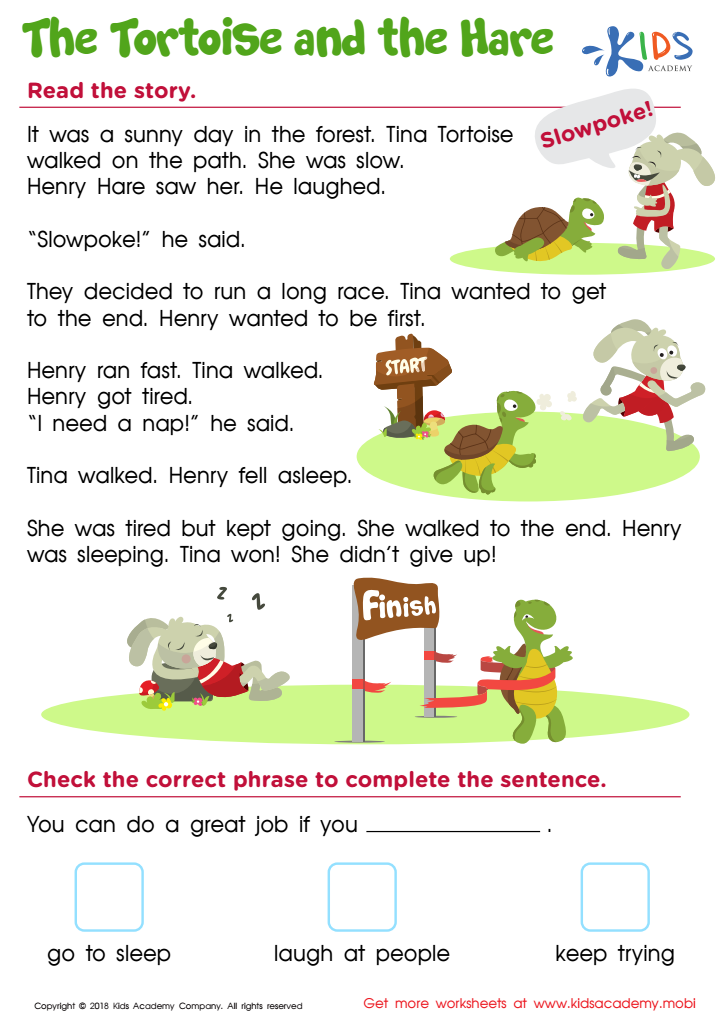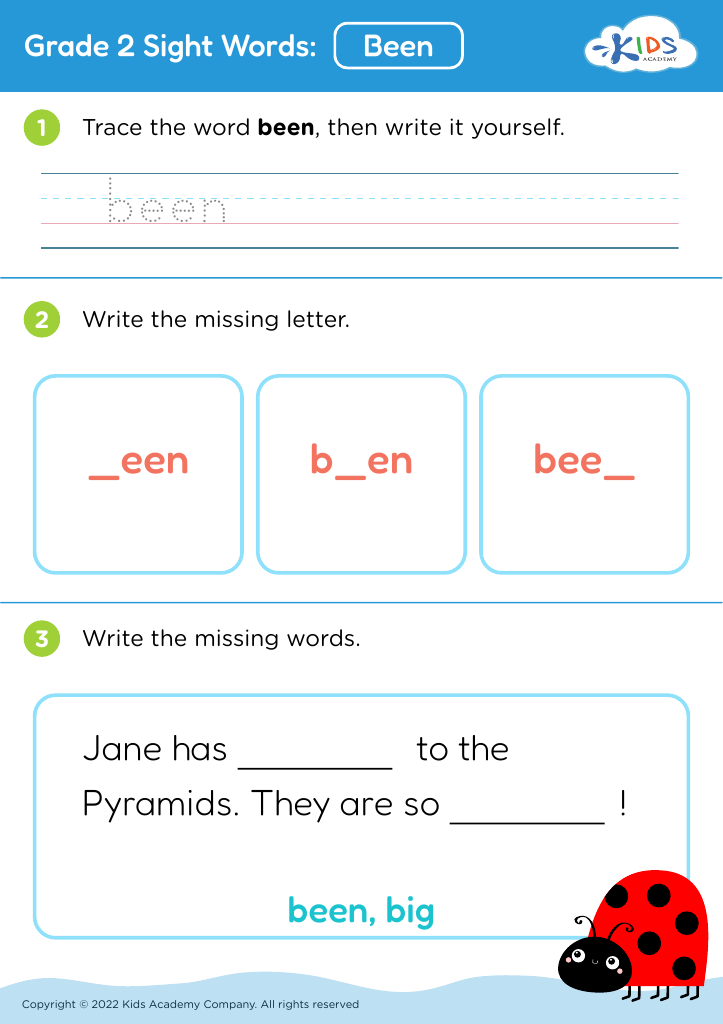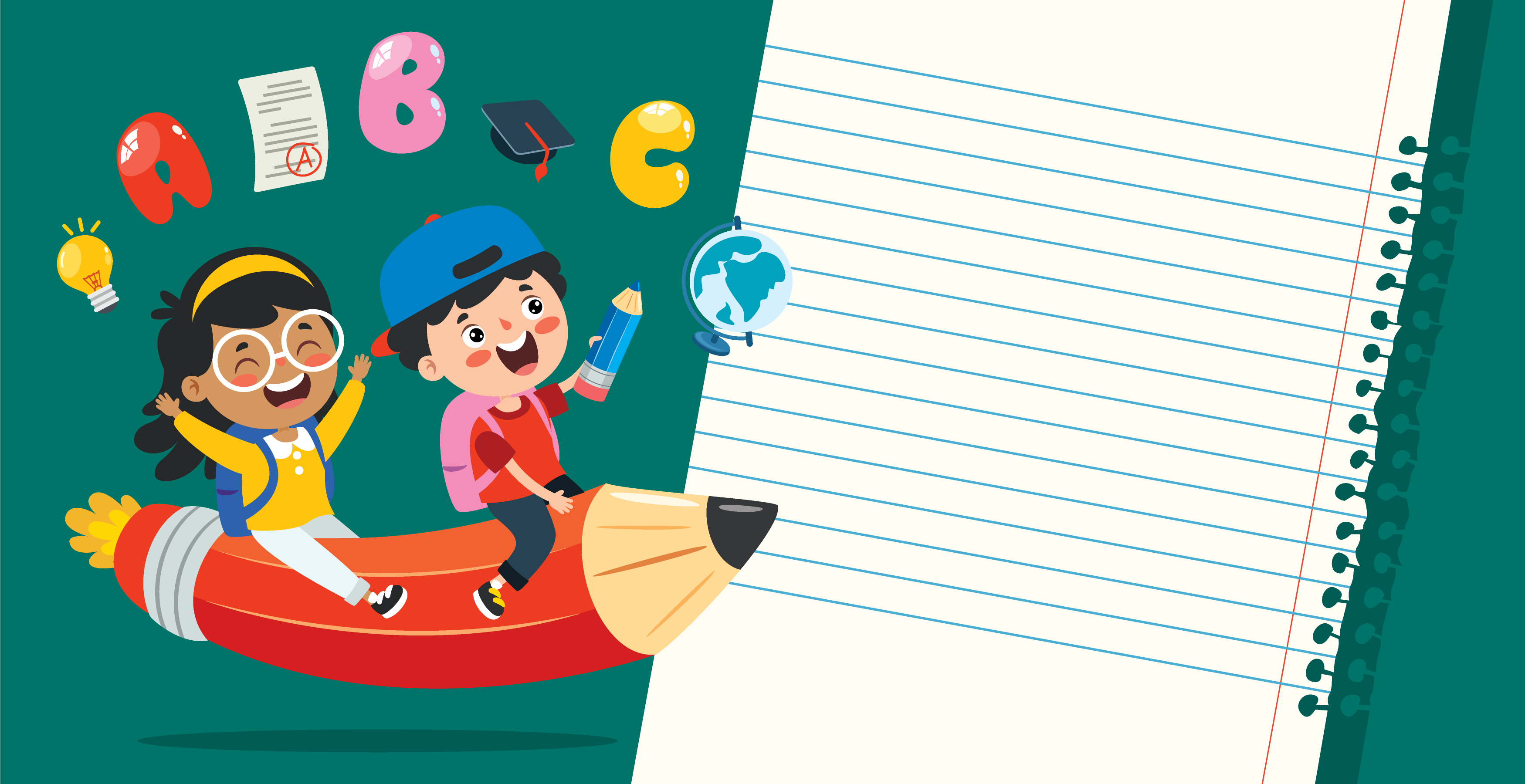Understanding sequencing Reading Worksheets for Ages 4-7
3 filtered results
-
From - To
Explore our engaging "Understanding Sequencing Reading Worksheets" designed specifically for children aged 4-7. These worksheets are perfect for fostering early literacy skills by helping young learners identify and arrange events in the correct order. Through fun activities, kids will develop critical thinking, improve comprehension, and enhance their storytelling abilities. Each worksheet offers colorful illustrations and age-appropriate exercises that keep students motivated and excited about learning. Whether at home or in the classroom, these resources serve as an essential tool for parents and teachers alike, ensuring your child builds a strong foundation in understanding sequencing in reading. Start their journey with us today!


Sequence: A Day at the Park Worksheet


The Tortoise and the Hare Worksheet
Understanding sequencing in reading is crucial for children aged 4-7, as it lays the foundation for stronger comprehension and critical thinking skills. At this developmental stage, children begin to grasp the structure of stories, including the importance of order in events. By teaching kids to recognize sequences, parents and teachers can help them make connections between actions and their outcomes, enhancing their ability to predict what will happen next in a narrative.
Sequencing skills also contribute to a child's overall literacy development. As they learn to identify the beginning, middle, and end of stories, they improve their recall abilities and become more engaged readers. This foundational skill encourages children to express their thoughts coherently, fostering creativity and communication skills.
Moreover, sequencing is applicable in real-life situations beyond reading, empowering children to organize their thoughts and tasks effectively. Engaging children in sequencing activities—such as retelling stories, creating timelines, or participating in games that require ordering events—can make learning interactive and enjoyable. Ultimately, supporting sequencing in young learners cultivatively nurtures critical literacy skills necessary for academic success and lifelong learning.
 Assign to My Students
Assign to My Students






.jpg)













